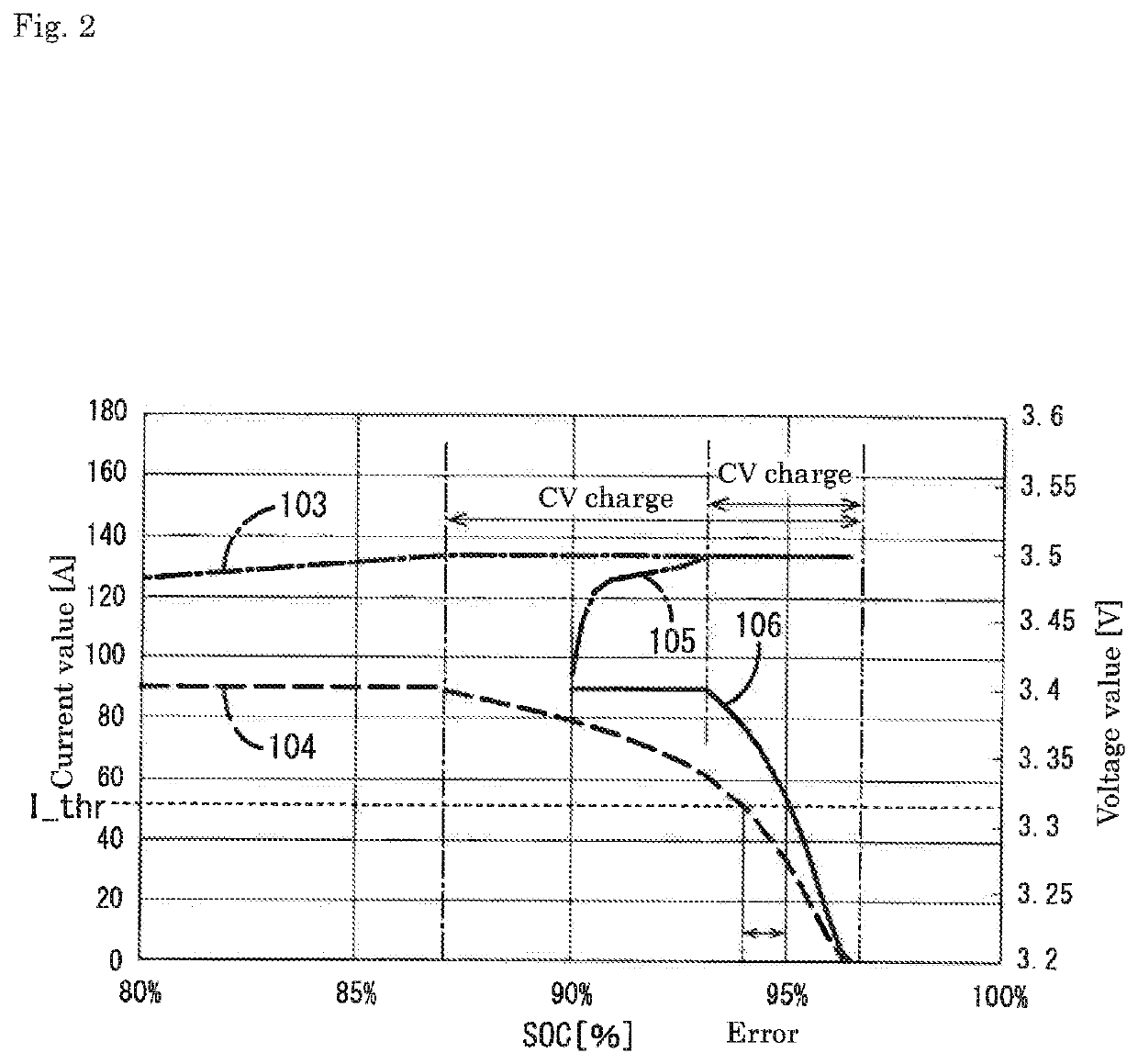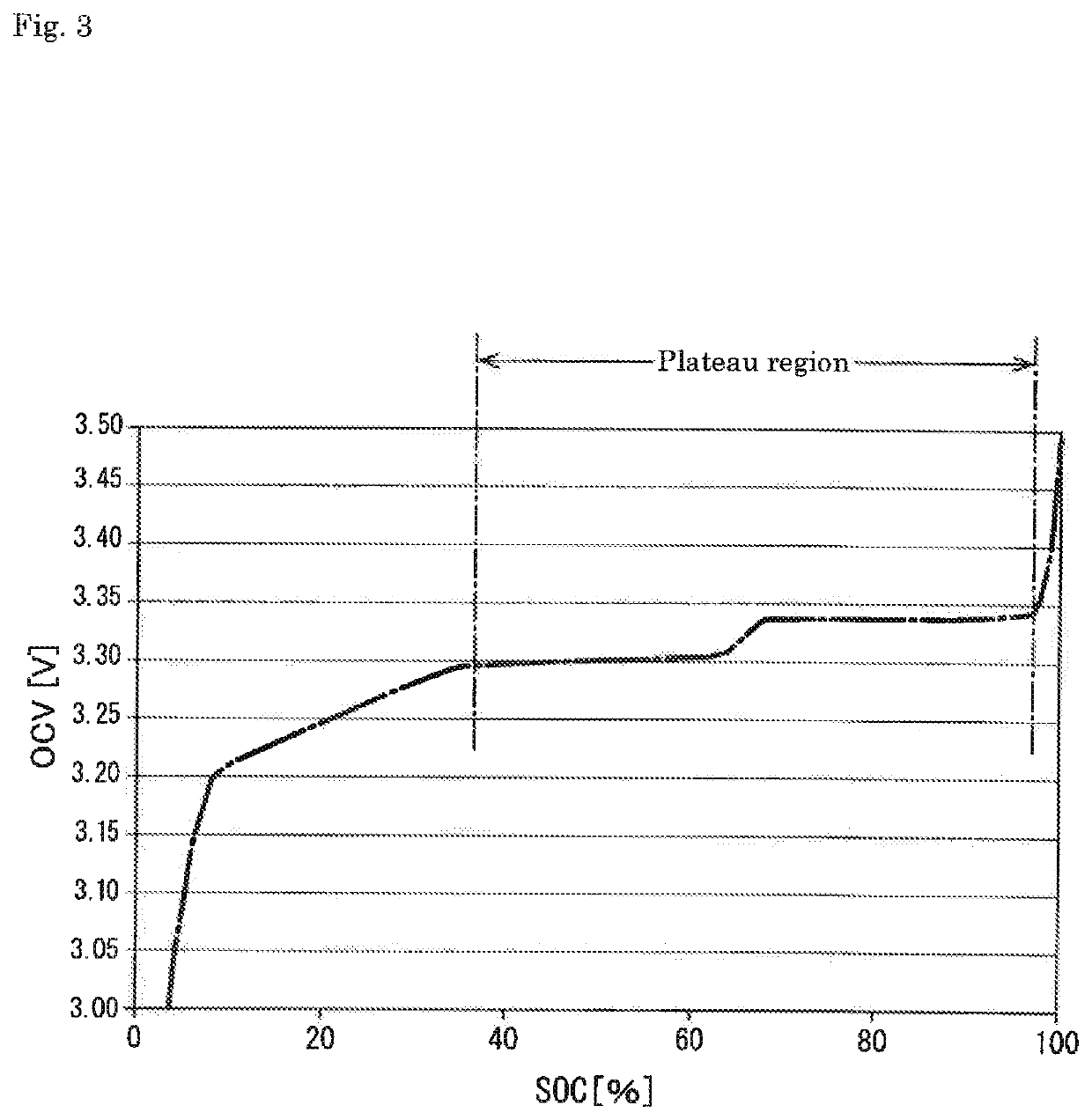Correction method for estimated state-of-charge value of energy storage device, management apparatus for energy storage device, and energy storage apparatus
- Summary
- Abstract
- Description
- Claims
- Application Information
AI Technical Summary
Benefits of technology
Problems solved by technology
Method used
Image
Examples
first embodiment
[0054]A first embodiment will be described with reference to FIGS. 5 to 12. In the following description, reference numerals of the drawings may be omitted for the same constituent members except for some of them.
[0055]A battery 1 (an example of an energy storage apparatus) according to a first embodiment will be described with reference to FIG. 5. An automobile 2 (an example of a vehicle) illustrated in FIG. 5 is an engine automobile and includes a starter for starting an engine. The battery 1 is a battery for starting the engine that is mounted on an automobile 2 and supplies electric power to the starter. The battery 1 is charged by an alternator of the automobile 2 when the engine starts. Although FIG. 5 illustrates a case where the battery 1 is housed in an engine room 2A, the battery 1 may be housed under a floor or in a trunk of a cabin.
[0056](1) Structure of Battery
[0057]As illustrated in FIG. 6, the battery 1 includes an outer case 10 and a plurality of battery cells 12 (an...
second embodiment
[0096]A second embodiment is a modification example of the first embodiment. The battery cell 12 deteriorates with use. Deterioration means that an actual chargeable capacity decreases. Even when the amounts of charged electricity are the same, when the actual capacities are different, appropriate correction values are different. Therefore, in the second embodiment, the correction value is determined in consideration of the degradation of the battery cell 12 in addition to the temperature of the battery cell 12 and the amount of charged electricity. Specifically, the management part 55 according to the second embodiment determines the correction value by Equation 1 below:
Correction value [%]=(actual capacity [Ah] of battery cell 12−eigenvalue [Ah]) / actual capacity [Ah] of battery cell 12×100 .
[0097]In Equation 1, the actual capacity of the battery cell 12 is the present actual capacity of the battery cell 12. The actual capacity of the battery cell 12 can be estimated by an appropr...
third embodiment
[0103]A third embodiment will be described with reference to FIG. 13. A third embodiment is a modification example of the first embodiment or the second embodiment. In FIG. 13, a time point T1 indicates a time point when the engine is started last time, a time point T2 indicates a time point when the engine is stopped last time, a time point T3 indicates a time point when the engine is started this time, and a time point T4 indicates a time point when the battery cell 12 is fully charged after the engine is started this time.
[0104]In the current integration processing 60 according to the third embodiment, the management part 55 further obtains the amount of electricity charged during a period from the start of the engine of the automobile 2 and the start of charge of the battery cell 12 to the stop of the engine in addition to the amount of electricity charged during the period from the start of the engine of the automobile 2 and the start of charge of the battery cell 12 to the ful...
PUM
 Login to View More
Login to View More Abstract
Description
Claims
Application Information
 Login to View More
Login to View More - R&D
- Intellectual Property
- Life Sciences
- Materials
- Tech Scout
- Unparalleled Data Quality
- Higher Quality Content
- 60% Fewer Hallucinations
Browse by: Latest US Patents, China's latest patents, Technical Efficacy Thesaurus, Application Domain, Technology Topic, Popular Technical Reports.
© 2025 PatSnap. All rights reserved.Legal|Privacy policy|Modern Slavery Act Transparency Statement|Sitemap|About US| Contact US: help@patsnap.com



